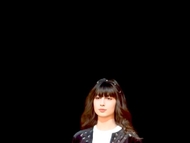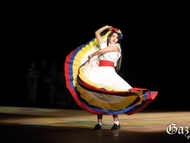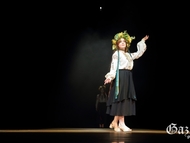Bulguksa Temple, also known as the ‘Temple of the Buddha Land'', is the most renowned temple in South Korea and is located in Gyeongju. The city of Gyeongju is surrounded by various historic landmarks and boasts the exceptional Bulguksa Temple, which was officially recognized as a World Cultural Asset by UNESCO in 1995. In fact, this city served as the former capital of the Silla Kingdom in 528 A.D. during King Beop Heung’s reign during the Silla Dynasty. The Bulguksa Temple underwent numerous renovations from the Silla Dynasty to the Joseon Dynasty due to the Japanese Invasion. Following the Imjin War in May 1593, Bulguksa was destroyed until 1969 when the formal Bulguksa Temple Restoration Committee was established to protect the site. Although the restoration of the Bulguksa Temple is a representation of South Korea’s historic remains, it remains only a fraction of it is the original size before it was damaged by previous invasions. Nonetheless, the temple remains organized and divided into three primary zones: Birojeon (the Vairocana Buddha Hall), Daeungjeon (the Hall of Great Enlightenment), and Geungakjeon (the Hall of Supreme Bliss).

The enchanting temple of Bulguksa has sophisticated and refined designs. It was built under the Chief Minister, Kim Dae Sung in 751 CE. According to the Samguk Yusa, the purpose of constructing Bulguksa was to pacify the spirits of his parents. The temple was crafted with wood and stones and has exquisite, tiled roofs in a delicate structure. The architecture and the site itself convey a symbolic meaning for visitors as they can experience the earthly and Buddhist realms at the temple. The construction commenced in 751 CE and was completed in 790 CE by monks, and other followers on behalf of Kim. However, Kim Dae Sung, the architect, was unable to see the final form due to his death. The construction took nearly forty years, which is especially outstanding, considering the limited advanced tools available during that era compared to modern society. Notably, the architectural designs of Bulguksa express Silla’s ambition for unity and balance during the dynasty. In addition to its desire to unify with the other kingdoms and bring peace to the ghosts of Kim Dae Sung’s parents, Bulguksa also mirrors and embodies the Utopia of Buddhism
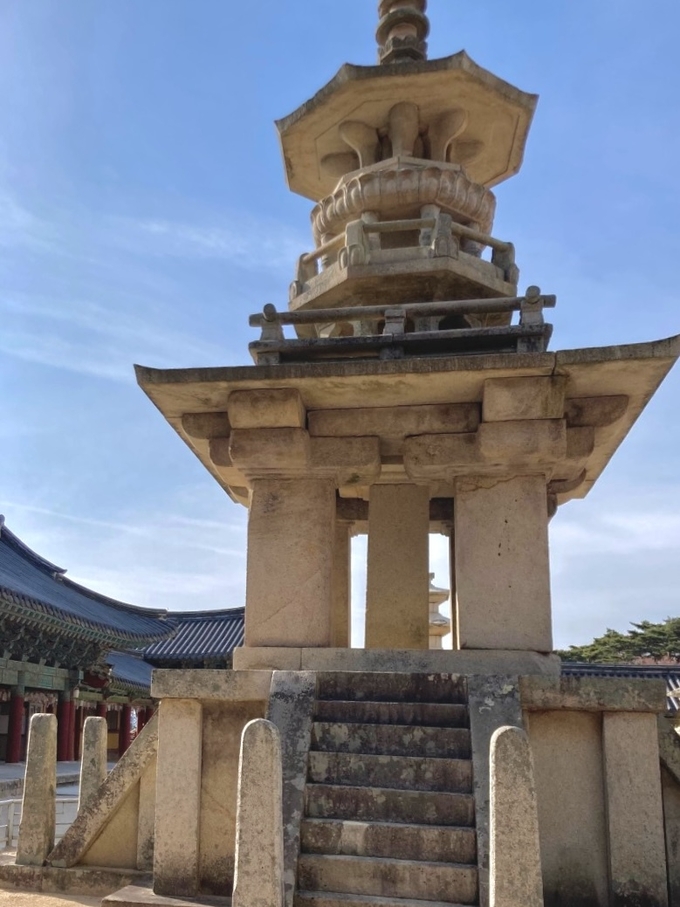
Bulguksa is also surrounded by many amazing features such as stone-carved pathways, fine staircases, tranquil ponds, and large courtyards. The most notable features are the two sacred tiered towers, or pagodas, Dabotap and Seokgatap. They are recognized as Korean national treasures for their unique structures alongside other Buddhist architectures. Stone Pagodas are typically formed in the facade of the main temple., In this way, the Dabotap was located on the east side of the Daeungjeon along with Seokgatap on the west side. Each of the towers represents significant Buddhas, more specifically, Dabotap represents the main temple and Seokgatap represents Sakyumuni Buddha. These towers were also damaged along with the Bulguksa temple due to the Japanese invasion of Korea, known as the Imjin War during 1592-1598. However, after its renovation in June 1973, the two towers were also repaired and able to regain their refinement and elegance. Nonetheless, both Dabotoap and Seokgatap are located side by side to symbolize that the two gods, or the Buddhas, are protecting Buddhism. In fact, the reason why the designs of the two towers are different holds a meaningful message to Buddhism that one should never doubt what Buddha says, but instead believe and accept everything.
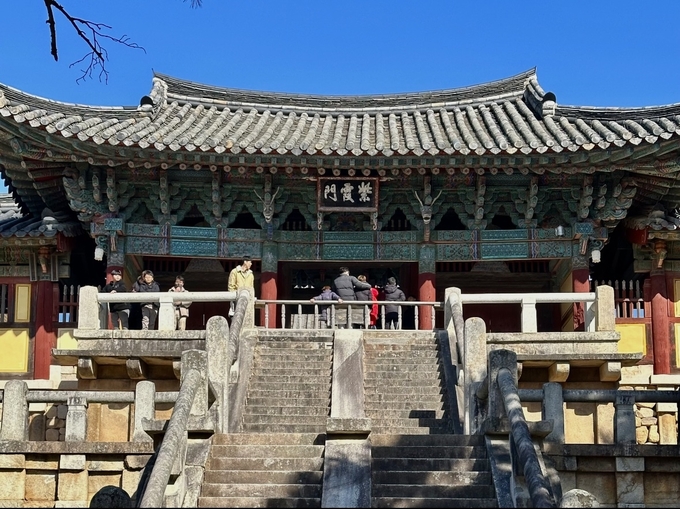
Underneath Bulguksa Temple is a staircase that was established in the mid-8th century. This staircase is divided into upper and lower steps where the upper section consists of eight steps, known as the Chibogyo, and the lower section consists of 10 steps, referred to as Yeohwagyo. Both staircase names have symbolic meanings. Yeohwagyo (upper staircase) symbolizes the Bridge of the Lotus Flower, and the Chibogu (lower staircase) the Bridge of the Seven Treasures, and specifically represents the decorations utilized for the Buddhist paradise of the West. Along with these two staircases, the other larger staircase is known to lead people to the courtyard of the Bulguksa Temple’s main worship hall.
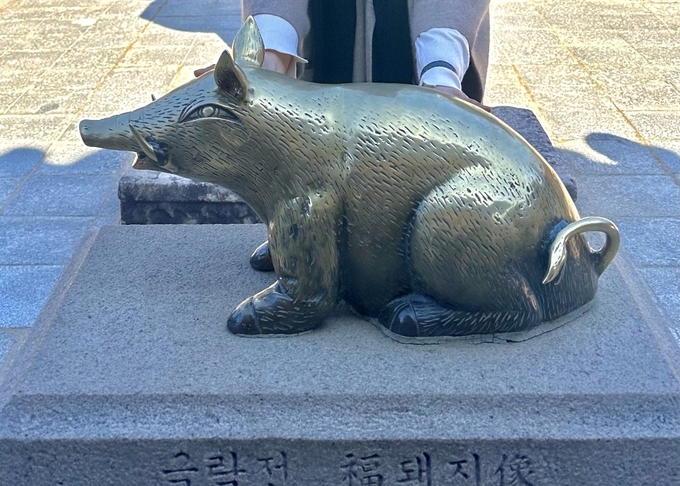
Visiting the ancient site of Bulguksa Temple is a worthwhile journey with families and friends and would supply a memorable experience. It is highly recommended to visit and explore Korea's top national treasures which have been acknowledged internationally. Although the city of Gyeongju is relatively small comparing its size of the city to Daegu, it will not fail to provide visitors with a lovely example of Korea’s outstanding historic architecture. The construction of Bulguksa over the vast reaches of time continues to stand as a role model for teaching many South Koreans about their histories. The information provided above is only a small part of the information about the temple, as visiting Bulguksa Temple in person is advised. These historic sites will expand your knowledge and provide an opportunity to learn South Korea’s national significance and its ancient histories, cultures, and artworks from the 8th century. For any visitors from outside Korea, English translations and brochure guides are provided at the site. If you are seeking a place to visit in the Fall while visiting South Korea, Gyeongju is the perfect destination to be engrossed by the beauty of autumn while touring the most famous historic sites in Korea.



